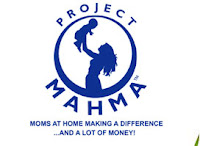So what should the conscientious consumer do? It's just like shopping for processed foods in the supermarket. You need to become a good label reader. Here are my tips to reading a multivitamin label:
Start With The Basics
1. Ignore flamboyant product names. Extravagant terms like "extra strength" or "meganutrition power" are used to sell the product and usually are empty catchwords. Ignore the name and study the label instead.
2. Look for nutrient amounts. Some companies will list a source, such as blue green algae or juice powder concentrate, but neglect to provide the amounts of many of the nutrients they claim to supply. How can you choose wisely if you aren't told what you are getting?
3. Make sure amounts are listed by percent of the Daily Value or DV, not just in mg or ug amounts. Very few consumers have memorized the DV amounts of all 24 nutrients. Labels should inform consumers of the percentage of each nutrient the supplement provides. This allows you to (1) compare amounts supplied by competing products, and to determine whether the supplement provides nutrients in proper proportion to one another.
4. Check to make sure that all 24 nutrients with established DV's are listed on the label. Count them. If it is a multi without iron there should 23.
If a product does not contain adequate amounts of some of the 24 nutrients, often the manufacturer will neglect to include these nutrients on the label.
For example, if a multi doesn't contain zinc, rather than list a zero, the manufacture will simply leave zinc off the label.
5. Don't be misled by "inflated" labels. Some supplements inflate the label by adding a lot of useless ingredients. One good example of a useless ingredient is para-amino benzoic acid, or PABA. PABA is a good sunscreen on the outside but useless on the inside. Bacteria can metabolize PABA into folic acid,
but humans cannot.
Another example is the addition of amino acids such as methionine to a multivitamin. Amino acids are macronutrients, not micronutrients. You simply can't put enough of them into a multivitamin for them to have any significant effect on the body.
Exercise Caution with the Following
1. "One-a-day tablets" - One-a-day tablets rarely supply adequate amounts of all 24 DV nutrients. Some minerals such as calcium require quite a bit of bulk, one tablet containing all the nutrients in proper amounts would be very large for an average person to swallow. Two tablets a day is a better option.
2. Supplements that contain artificial colors, artificial sweeteners, or chemical preservatives. We get enough of these in our everyday diets without "supplementing" for more. There are many of these agents. Some of the most common are FD &C Red #40, FD&C Yellow 96, shellac, BHT, BHA, and
sucralose.
Pick a Winner
Use the criteria below to eliminate the inferior products from your list of possibilities.
1. Zinc to copper ratio is important. For best absorption and maximum utilization by the body, these two minerals should be present in a 1:1 ratio of their DV's.
2. The amount of vitamin A should not exceed the 50% of the DV unless it's in the form of betacarotene. Preformed vegetable vitamin A is more toxic that vitamin A from beta-carotene. Ideally, the supplement should provide 50% of the DV as vitamin A and 50% as beta-carotene.
3. Calcium and magnesium should be present at near 50% of their DV's. Most Americans get only 50% of the DV for these nutrients from their diet, and these nutrients are absolutely essential for healthy bones.
4. If biotin or folic acid are left out or are present in insignificant amounts - even if the label passes all the other tests - do not buy the product.
5. B-complex vitamins in a "multi" should be supplied in approximately 100 percent of their DV's unless the "multi" is designed for a population group with special needs, such as pregnant and lactating women or the elderly. Make sure all eight B vitamins are supplied. Some manufacturers will leave out the expensive B vitamins and load up on the cheap ones in order to cut costs but still appear impressive. Niacin, thiamine, and riboflavin are relatively cheap. Biotin and folic acid are expensive. A supplement that gives 10% of the DV for biotin and 3000% of the DV for thiamine is ridiculous. There is absolutely no rationale for a ratio like this except to mislead consumers and make a profit at their expense. Even worse is the fact that an excess of one B vitamin can cause relative deficiencies in the other B vitamins.
The Winning Combination:
Adequate amounts of nutrients + Proper balance of the Daily Values = A winning multivitamin/multi-mineral supplement. Using these criteria, you will be able to select for yourself a high quality multivitamin/multimineral
supplement. From now on, you will not have to rely on a salesperson's advice, or be misled by a deceptive label or "hype" statements. You can make an informed choice based on what you have learned about reading labels knowledgeably.
These statements have not been evaluated by the Food and Drug Administration. This information is not
intended to diagnose, treat, cure or prevent any disease.
About The Author
Dr. Chaney has a BS in Chemistry from Duke University and a PhD in
Biochemistry from UCLA. He currently holds the rank of Professor at a major
university where runs an active cancer research program and has published
over I00 scientific articles and reviews in peer-reviewed scientific journals.
To your health,
Designer Hippie Mom




